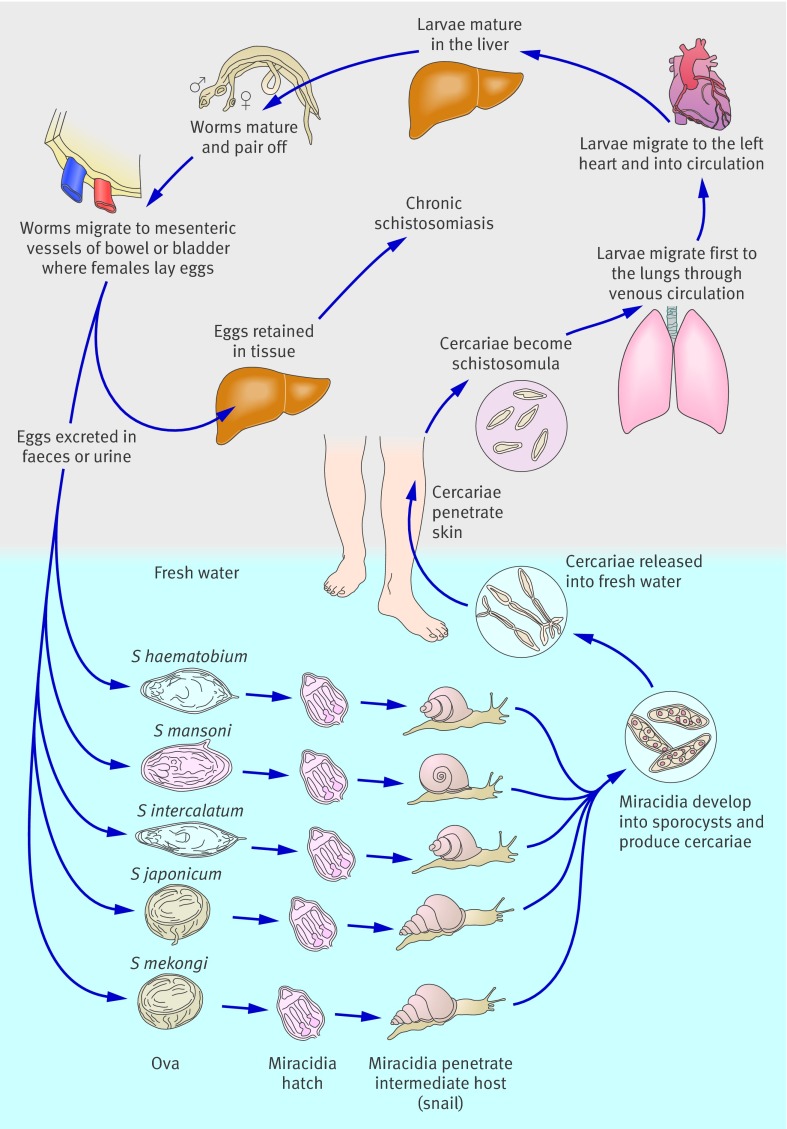Fig 3 Schistosome lifecycle. Freshwater molluscs act as intermediate hosts and higher order vertebrates as definitive hosts. Adult male and female worm pairs (slender female schistosome lies within the ventral gynaecophoric canal of the male) produce numerous eggs, most of which are deposited in the capillaries and tissues of the parasitised target organ and some of which are excreted via the urine or faeces. The shape of the eggs and the location of their excretion differentiate the various species. S haematobium inhabits the urinary system and the sacral and pelvic vessels, while intestinal schistosomes inhabit the intestinal mucosa. Some eggs are carried downstream in the portal circulation and, in the case of an S mansoni or S japonicum infection, are trapped in the liver. Once excreted, an ovum hatches in contact with fresh water and a free living motile miracidium is released to infect the specific freshwater snail intermediate host—with S mansoni this is generally Biomphalaria glabrata (Americas) or B pfeifferi (Africa). After about 30 days infected snails release free swimming cercariae in response to sunlight. These can penetrate the skin of the mammalian host within 12-24 hours, invade the lymphatic system, and enter the circulation via the lungs as maturing schistosomula.

An official website of the United States government
Here's how you know
Official websites use .gov
A
.gov website belongs to an official
government organization in the United States.
Secure .gov websites use HTTPS
A lock (
) or https:// means you've safely
connected to the .gov website. Share sensitive
information only on official, secure websites.
